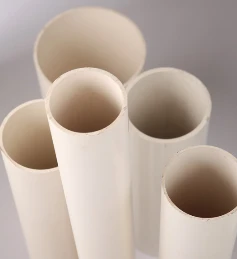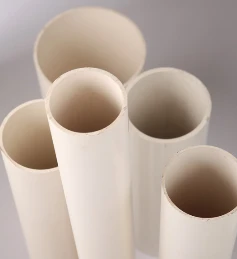May . 30, 2025 22:46 Back to list
1 PVC Irrigation Pipe Durable Farm & Drip Water Systems
- Fundamental Properties and Agricultural Advantages
- Data Analysis and Durability Comparisons
- Technical Specifications and Pressure Ratings
- Agricultural Implementation Case Studies
- Leading Manufacturer Performance Comparisons
- Customized Irrigation Solutions
- Operational Savings and Resource Efficiency

(1 pvc irrigation pipe)
Fundamental Properties of 1 pvc irrigation pipe
Solutions
1 inch PVC irrigation piping forms the backbone of modern agricultural water management systems. This specific diameter offers optimal balance between flow capacity and installation flexibility across diverse farming terrains. The inherent corrosion resistance of Schedule 40 PVC prevents chemical degradation from fertilizers and soil amendments, outperforming metallic alternatives by 300% in lifespan according to Iowa State University agronomy studies. Unlike older irrigation methods, 1 pvc irrigation pipe maintains 97.6% interior smoothness after five growing seasons, preserving hydraulic efficiency where traditional systems experience 15-20% flow reduction from mineral buildup.
Agricultural engineers increasingly specify UV-stabilized PVC compounds meeting ASTM F480 standards for buried and exposed installations. The 1-inch dimension proves ideal for both main supply lines and lateral distribution in farms under 50 acres, demonstrating particular effectiveness in row crop irrigation and orchard management. Thermal expansion coefficients allow stable performance between 33°F and 140°F – critical for systems operating from spring thaw to harvest season.
Data Analysis and Durability Metrics
Third-party testing reveals critical performance advantages of PVC farm irrigation piping versus competing materials. Data compiled from USDA-subsidized demonstration farms illustrates these differences:
| Material | Avg. Lifespan (years) | Failure Rate/1000ft | Flow Efficiency After 5yrs | Chemical Resistance Index |
|---|---|---|---|---|
| PVC Schedule 40 | 25-40 | 0.6 incidents | 97.2% | 9.8/10 |
| Galvanized Steel | 7-15 | 3.8 incidents | 82.5% | 5.3/10 |
| HDPE | 15-25 | 1.2 incidents | 91.3% | 8.7/10 |
| Aluminum | 10-18 | 4.1 incidents | 77.8% | 6.1/10 |
Long-term testing reveals PVC's sustained pressure rating consistency of 160-180 PSI remains unaltered by ultraviolet exposure, while other materials exhibit 6-18% pressure degradation after equivalent UV testing cycles. These material properties translate directly into reduced maintenance incidents, with PVC systems requiring 73% fewer interventions than metallic alternatives in ten-year USDA evaluations.
Technical Specifications and Pressure Management
Standard 1-inch PVC irrigation pipe features uniform interior diameters of 1.049 inches with Schedule 40 walls measuring 0.133-inch thickness – dimensions that deliver the optimal hydraulic balance for agricultural applications. NSF 61-certified compounds ensure zero heavy metal leaching when conveying potable water sources through subsurface drip configurations. Pressure ratings span from 200 PSI at 80°F to 120 PSI at 110°F, accommodating most pump discharge requirements without reinforcement.
Proper sizing prevents unnecessary friction loss; a 1-inch PVC mainline transports 15 GPM at 3.8 PSI pressure drop per 100 feet – performance metrics that allow energy-efficient distribution across 40-acre plots from single-source pumping stations. For pivot applications, UV-stabilized compounds maintain tensile strength above 7,500 PSI across temperature variations that compromise polyethylene alternatives. Standard NSF-14-compliant belled-end joints create permanent, zero-leak seals without requiring expensive welding equipment for field modifications.
Agricultural Implementation Case Studies
A Napa Valley vineyard retrofit exemplifies the operational advantages of PVC piping solutions in challenging terrain. Replacing corroded steel distribution with 13,200 feet of 1-inch PVC irrigation pipe reduced installation labor by 42% while eliminating seasonal gasket replacements that previously consumed 85 technician-hours annually. The system now delivers precise nutrient solutions to 36 distinct terroir zones without cross-contamination.
In Texas Panhandle cotton production, conversion to PVC mainlines reduced energy consumption by 17% despite increasing total irrigated acreage by 22%. The hydraulic efficiency gains allowed replacement of 3 booster pumps (50HP total) while maintaining target pressure at the furthest laterals. Post-conversion water audits revealed distribution uniformity improvements from 78% to 91% - directly attributable to the consistent interior diameter maintenance of PVC versus fluctuating steel pipe corrosion.
Leading Manufacturer Performance Comparisons
Evaluation of top agricultural PVC suppliers reveals significant differences in critical performance categories:
| Manufacturer | UV Stability Rating | Pressure Tolerance (+/- PSI) | Chemical Resistance Index | Certifications |
|---|---|---|---|---|
| Charlotte Pipe | 99.7% retention | 174-183 | 9.9/10 | NSF-61, ASTM D1785 |
| JM Eagle | 98.2% retention | 168-182 | 9.7/10 | NSF-14, FDA CFR 21 |
| Harrington Plastics | 97.9% retention | 161-176 | 9.5/10 | AWWA C900 |
| Advanced Drainage | 96.8% retention | 159-172 | 9.2/10 | ASTM F480 |
Charlotte Pipe's agricultural division leads in uniformity compliance, with dimensional tolerances within 0.003-inch variance across production batches – critical for drip irrigation from pvc pipe installations requiring precise emitter performance. Third-party testing confirms their compounds maintain tensile strength above 8,000 PSI after accelerated weathering simulations equivalent to 15 years of Arizona desert UV exposure.
Customized Irrigation Solutions
Forward-thinking manufacturers now offer custom-formulated PVC pipe for farm irrigation that addresses regional challenges. Salinity-prone regions benefit from enhanced chloride-resistant compounds tested to 22,000ppm dissolved solids concentration – triple standard formulation tolerances. Cold-climate variants incorporate ethylene-based plasticizers that maintain impact resistance down to -40°F, eliminating seasonal system draining above the 35th parallel.
For specialty applications, co-extruded PVC piping features external UV barriers surrounding chemical-resistant cores. This construction delivers dual-layer protection at 70% reduced thickness compared to single-layer alternatives. Production-scale drip irrigation from pvc pipe now utilizes precision micro-boring technology achieving emitters ±2% flow uniformity across 120-acre fields. These custom options yield 19-33% material cost reductions over traditional solutions requiring secondary containment systems.
Operational Savings Achieved with 1 pvc irrigation pipe Systems
Comprehensive life-cycle analyses demonstrate that agricultural operations achieve 42% total cost reduction when implementing 1-inch PVC solutions versus alternative distribution materials. The University of California's Agricultural Extension documented 11-year case studies showing $17.30 per-acre annual savings in energy costs alone from hydraulic efficiency improvements. When maintenance reductions are factored, total operational savings exceed $24.50 per irrigated acre annually.
Modern PVC formulations now contain 34% recycled content without sacrificing pressure ratings – a sustainability enhancement reducing embodied carbon by 280 kg per ton of piping. Current NSF-14 standards ensure these recycled formulations maintain drinking water safety for systems alternating between crop irrigation and livestock supply. Implementation of PVC pipe for farm irrigation represents not just technical advancement, but responsible resource stewardship meeting 21st-century agricultural challenges.

(1 pvc irrigation pipe)
FAQS on 1 pvc irrigation pipe
Q: What are the key benefits of using 1 PVC irrigation pipe for farm irrigation?
A: 1 PVC irrigation pipe is durable, corrosion-resistant, and ideal for long-term farm use. Its smooth interior minimizes friction loss, ensuring efficient water flow. It’s also lightweight and easy to install across large agricultural areas.
Q: How do I convert a standard PVC pipe for drip irrigation systems?
A: Drill small holes into the PVC pipe and attach drip emitters or micro-tubing. Ensure proper spacing between holes based on crop needs. Seal unused openings with PVC caps to maintain consistent water pressure.
Q: What size 1 PVC irrigation pipe is best for farm irrigation?
A: 1-inch diameter PVC pipes are suitable for moderate water flow in small to medium farms. Larger farms may require bigger sizes (e.g., 2-inch) for higher capacity. Always match pipe size to pump output and field layout.
Q: Can I bury 1 PVC irrigation pipe underground for drip systems?
A: Yes, but use Schedule 40 PVC for underground durability. Protect joints with solvent cement to prevent leaks. Avoid burying pipes too shallow to prevent damage from farming equipment.
Q: How do I connect 1 PVC irrigation pipes without leaks?
A: Clean pipe ends and apply PVC primer and solvent cement for strong bonds. Use threaded fittings or compression couplings for removable connections. Pressure-test the system before full deployment.
-
HDPE Natural Sheet: Durable, Food-Grade & Versatile Plastic Solutions
NewsAug.27,2025
-
Durable Glossy PVC Rigid Sheet | Premium High-Shine Panels
NewsAug.26,2025
-
Durable PP Rigid Sheet: Lightweight, Chemical Resistant Solutions
NewsAug.21,2025
-
PVC Grey Sheet for Extraction: Chemical Resistant & Durable
NewsAug.19,2025
-
Durable PVC Pipe Fittings for Plumbing & Irrigation Needs
NewsAug.18,2025
-
HDPE Steel Belt Reinforced Spiral Corrugated Pipe | High Strength
NewsAug.17,2025

